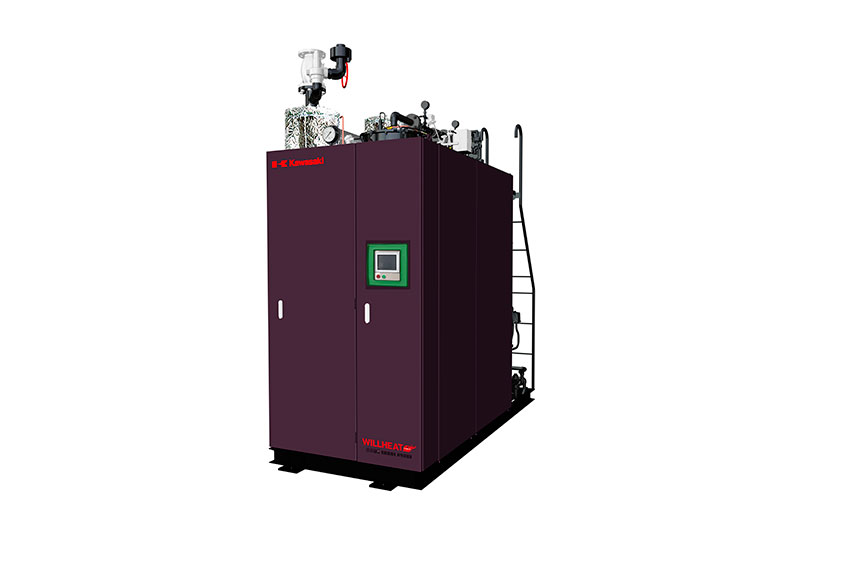

For over 120 years, Kawasaki Thermal Engineering has been on the boil in providing world firsts when it comes to package boilers and absorption chillers.

Kawasaki Thermal Engineering Co., Ltd. (KTE) launched the WILLHEAT series of compact once-through boilers equipped with low-NOx,*1 hydrogen combustion dry burners, in Japan market.
This product was developed based on KTE's experience and technologies from the manufacturing of boilers that use hydrogen byproduct from petrochemical plants, steelworks, caustic soda production operations and other such facilities and processes as their fuel. Development also took advantage of Kawasaki Heavy Industries' knowledge in hydrogen-related fields. For these latest boilers, KTE developed a new type of burner fueled by hydrogen, which is a highly promising, environmentally friendly, next-generation energy source.
Hydrogen is a clean energy source that emits no CO2 during combustion, but due to its high burning temperature it produces roughly three times the NOx emissions of natural gas fuel.*2 KTE's new products use dry burners, which do not require NOx-reduction measures seen in standard-type burner combustion chambers such as steam-spraying systems*3 and exhaust-gas recirculation.*4 Furthermore, these products utilize a proprietary hydrogen and air mixing approach to achieve NOx emissions on par with natural gas combustion emissions, even with consideration taken for the low air ratio*5 stipulated by the Energy Saving Act.*6 Because no steam spraying is carried out, unnecessary steam output, heat loss, and other operational waste can be avoided. Moreover, no exhaust gas recirculation equipment is required, which reduces costs normally incurred in conventional hydrogen-combustion boilers due to superior maintainability and so forth.
Moving forward, both KTE and the Kawasaki Group will continue revolutionizing technologies for hydrogen-related products used in boilers, absorption chillers and other equipment, while actively expanding hydrogen-related product offerings. At the same time, they aim to respond with precision to a diverse range of market needs and contribute toward environmental load reductions and the achievement of a society with minimal or no carbon emissions.
The following is a basic summary of product features for KTE's new boiler product series.
Features
(1) Excellent environmental, safety, and energy-saving performance
(2) High steam quality
Related links
https://www.khi.co.jp/corp/kte/product/boiler/hydrogen_en/
Contact point:
0 COMMENTS